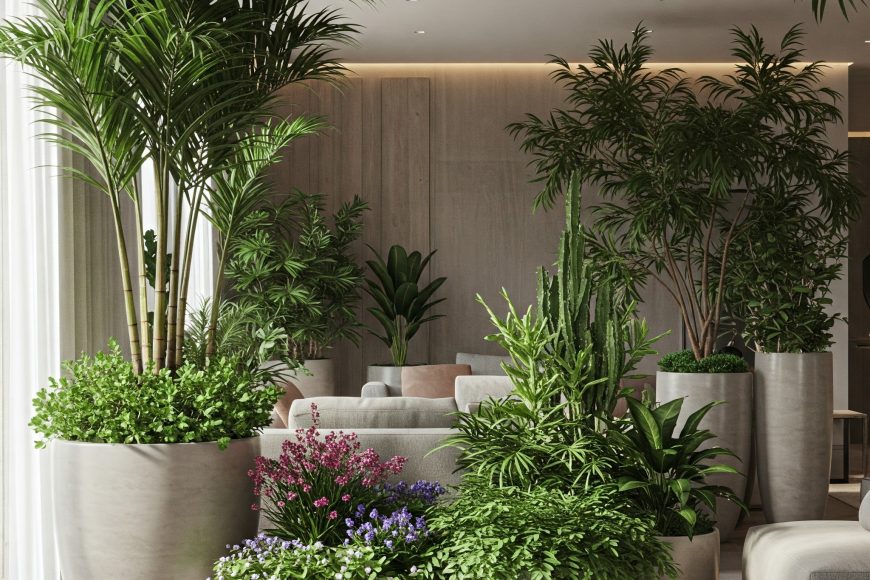₨ 0
Importance of Mobile Interior Green Spaces
- Improved air quality: Plants act as natural air purifiers, filtering out toxins and increasing oxygen levels. This is particularly crucial in indoor environments where air circulation can be poor.
- Example: Mobile vertical gardens or plant walls in offices, hospitals, or schools can significantly enhance air quality.
- Enhanced well-being: Studies show that indoor plants reduce stress, improve mood, and boost creativity and productivity.
- Example: A “plant trolley” that can be moved between workspaces in an office, or a small indoor greenhouse for a therapeutic environment.
- Flexibility and accessibility: Mobile green spaces can be easily moved and adapted to different needs and spaces.
- Example: Planters on wheels that can be rearranged in a home, or modular green walls that can be reconfigured.
- Connection with nature: Bringing nature indoors helps people feel more connected to the natural world, even in urban environments.
- Example: A mobile terrarium or “plant aquarium” that creates a miniature ecosystem.
Importance of Mobile Exterior Green Spaces
- Urban greening: Mobile green spaces can transform underutilized urban areas like parking lots, rooftops, or vacant lots into temporary green oases.
- Example: Pop-up parks created with movable planters, trees in containers, and modular seating.
- Community building: Mobile gardens can be used to create temporary community gardens, bringing people together to grow food and connect with nature.
- Example: A mobile garden that travels between different neighborhoods, providing access to fresh produce and gardening education.
- Event enhancement: Mobile green walls and planters can be used to create attractive and sustainable backdrops for events and festivals.
- Environmental education: Mobile gardens and exhibits can be used to teach people about the importance of plants, biodiversity, and sustainable practices.
- Example: A mobile greenhouse that travels to schools or community centers, showcasing different plant species and ecosystems.
- Climate change mitigation: Strategically placed mobile green spaces can help to reduce the urban heat island effect and improve air quality.
- Example: Green-roofed buses or trams that bring vegetation to city streets.
Key Considerations for Mobile Green Spaces
- Design and functionality: Mobile units need to be well-designed, sturdy, and easy to move and maintain.
- Plant selection: Choosing the right plants for the specific environment and purpose is crucial.
- Water management: Efficient irrigation systems and water conservation strategies are essential.
- Accessibility: Mobile green spaces should be designed to be accessible to people of all ages and abilities.
As our cities become denser and greener, mobile green spaces will play an increasingly important role in bringing nature to the people and enhancing our urban environments.

